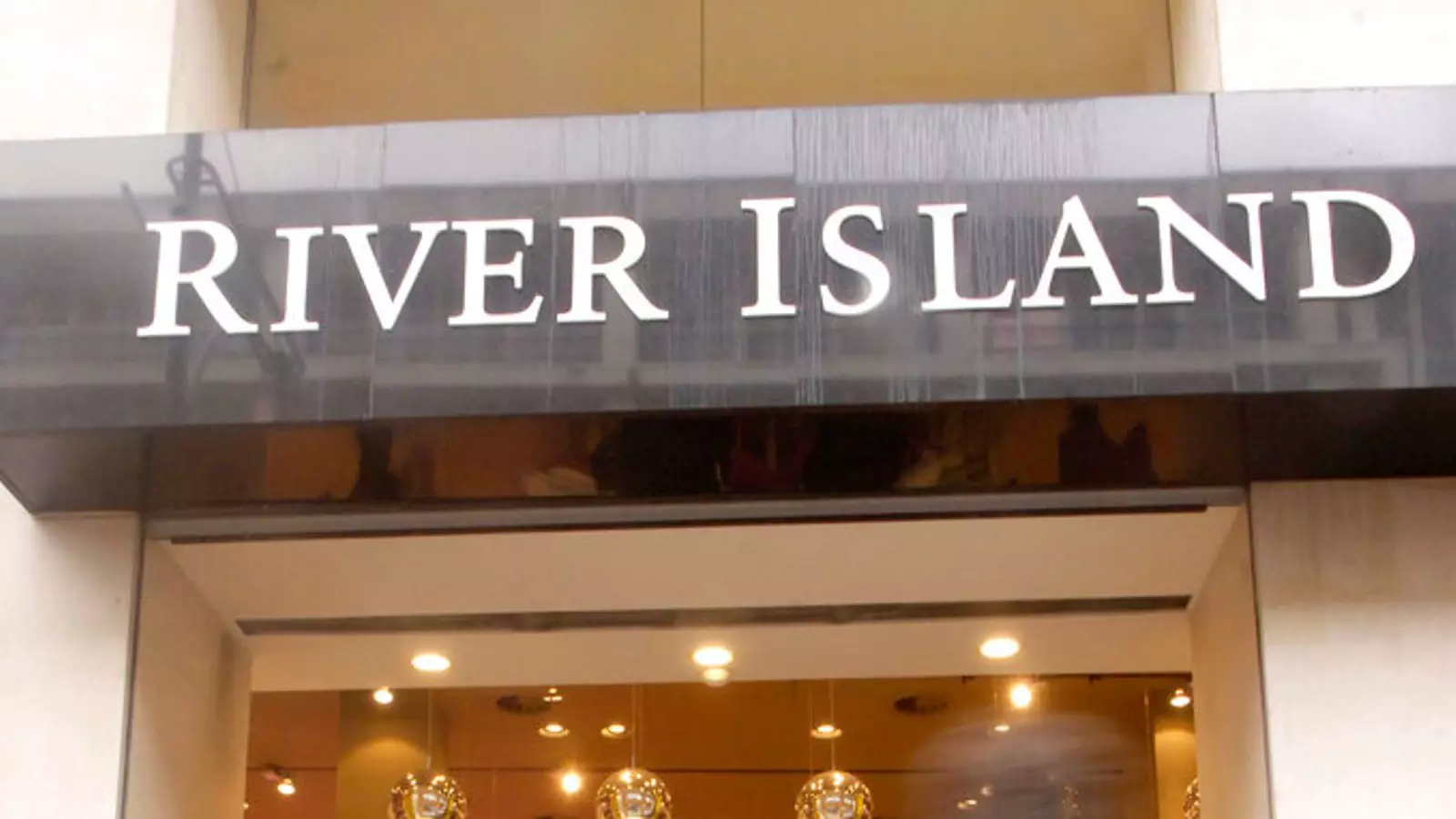The fashion industry, once synonymous with glamour and stability, now finds itself in a turbulent storm of uncertainty. River Island, one of the UK’s most recognized high street retailers, is facing an arduous path filled with daunting prospects following the announcement of a radical rescue plan. This isn’t just a simple rebranding; it’s a deep structural overhaul that could jeopardize not only a legacy brand but also the livelihoods tied to it. With 230 stores and around 5,500 employees, the imminent crisis raises fundamental questions about the very nature of retail in today’s fast-paced digital age.
The news that River Island’s owners have summoned advisers from PricewaterhouseCoopers (PwC) is both alarming and telling. It indicates a recognition of severe internal issues—a call to arms before the ship sinks. Despite the company’s deep-rooted history, having evolved from its origins as Lewis and Chelsea Girl since 1948, its current predicament showcases a retail landscape increasingly dominated by e-commerce and shifting consumer behavior. What was once a thriving business is now grappling with a substantial pre-tax loss of £33.2 million, a financial chasm that seems almost insurmountable without drastic measures.
Changing Market Dynamics
The retail environment is relentless; customer preferences are evolving, and traditional business models are being tested like never before. River Island’s latest accounts paint a dire picture, revealing that turnover dropped by more than 19% to £578.1 million. These figures reflect not just an operational failure but an inability to adapt swiftly amid an urgent demand for agility in shopping experiences. Brands that fail to keep pace with economic shifts, technological trends, and consumer desires will inevitably find themselves on the chopping block.
There’s a powerful paradox at play here: while fashion remains an intrinsic part of British culture, the retailers that carry these legacies are often not equipped to navigate new market demands. The recent emphasis on convenience, diversity, and speed in shopping journeys has left many brands, including River Island, struggling to keep up. As we witness seismic changes in consumer behavior, it begs the question—are traditional retailers still relevant, or are they merely relics of a bygone era?
The Allure vs. The Reality of Retail Restructuring
A restructuring plan is often framed as a “saving grace” for faltering companies; however, this court-supervised process often leads to a painful reckoning involving store closures and, inevitably, job losses. As River Island navigates this restructuring, one can’t help but feel a sense of dread for those employees who may soon find themselves casualties of corporate strategy. The very safety nets that once seemed steadfast are now being tested, revealing the fragility of employment in an industry beset by change.
The range of threats posed by economic instability—rising inflation, global supply chain disruptions, and an increasingly competitive marketplace—highlights the harsh realities facing all retailers today. Tax changes that have been dubbed detrimental by industry leaders only exacerbate these issues, forcing companies to reconsider their operational models or risk that all-too-bleak fate of insolvency seen in other well-known chains.
As River Island attempts to emerge with a restructured roadmap, there are undeniable parallels to be drawn with other retailers like Prezzo and Hobbycraft, who’ve found themselves in similar straits. Yet the key differentiator is this: can River Island cultivate a vision that resonates with consumers while refining its business model, or will it become just another name among the countless others lost to the ruthless tide of retail transformation?
The Path Forward: A Fork in the Road
It’s easy to see River Island’s future as bleak, yet within this darkness lies a precarious opportunity for rebirth. However, such a phoenix rising from ashes requires an integrated approach that marries tradition with innovation. The challenge may very well hinge on the ability to transform brand identity into something that appeals not just to nostalgia but also to the contemporary consumer’s ever-evolving sensibilities.
For those still willing to support a future for River Island, the hope is that they can navigate this transition with foresight and strategic agility. In a world where adaptation equals survival, the question remains: Can River Island—once a beacon of high street fashion—rise to the occasion, or will it forever remain trapped in the narrative of its decline?



Leave a Reply